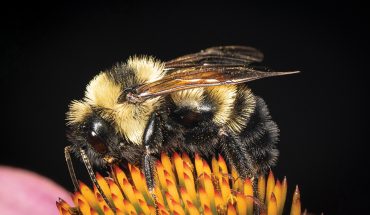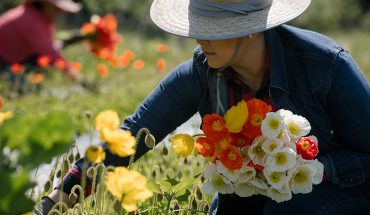by Tony Avent
illustration by Ippy Patterson
Who doesn’t know scheffleras? Whether you’ve abused them as houseplants or strolled underneath them at your favorite Florida theme park, most of us have had a personal experience with scheffleras.
Scheffleras are members of the aralia family, a large plant family that includes members on several continents, in both tree and perennial forms. Aralia family members include the houseplant false aralia, the herb ginseng, and its best-known cousin, English ivy.
I’m always curious to find and try relatives of plants I already know and grow, so back in the early 1990s, I set my sights on scheffleras. Most of the scheffleras I knew were from my houseplant days; the tree-form Schefflera actinophylla and the dwarf Schefflera arboricola.
As I began to research the genus, I discovered that most schefflera species were completely unknown in cultivation, despite many being native to moderate to high elevations in Asia. At the time, only a couple of the 38 Chinese native species existed in Western cultivation.
In the years since my schefflera infatuation began, I’ve made several trips to Asia in search of new scheffleras, while other plant explorer friends have done the same. Finally, in 2003, I was able to acquire my first new schefflera, Schefflera delavayi. This 25-foot tree hails from elevations as high as 9,000 feet in the mountains of South Central China, and word of its winter hardiness was already the stuff of legends in plant geek circles.
In the years since, I’ve acquired twelve other schefflera species, all of which, I’m sad to say, made great compost. I learned that scheffleras from low elevations die in our winters, while scheffleras from high elevations die in our summers.
So I marveled in 2008 when I first saw the stunning Schefflera taiwaniana in the mountains of Taiwan – only to later discover that it has no tolerance for temperatures above 90 degrees. This would become a theme I’d see repeated over and over again, as I checked each schefflera off my “been there, killed that” list.
But one escaped that group. My first acquisition, Schefflera delavayi, still thrives in our garden after 12 years, including some brutal summers and cold, icy winters. Our original plant is now 6 feet tall and 6 feet wide, so not exactly a fast-growing shade tree. Instead, I like to think of Schefflera delavayi as an attention-getting evergreen specimen.
We’ve grown Schefflera delavayi in both sun and shade; and while it thrives in both, we see some foliar burn after cold winters, like this recent one, where temperatures dropped into the single digits. In shadier conditions, it showed no leaf damage. We’ve also grown it in both wet and dry soils, and it’s handled both with grace.
Not only is the foliage of Schefflera delavayi great, but in mid-October, the plants are topped with huge, terminal flower panicles, or branching clusters. Each 2-foot by 18-inch panicle is made up of hundreds of small white flowers – quite a sight as the fall season winds down. As they are making their way into more garden centers, I hope you’ll consider adding one of these unique evergreen trees to your garden.




